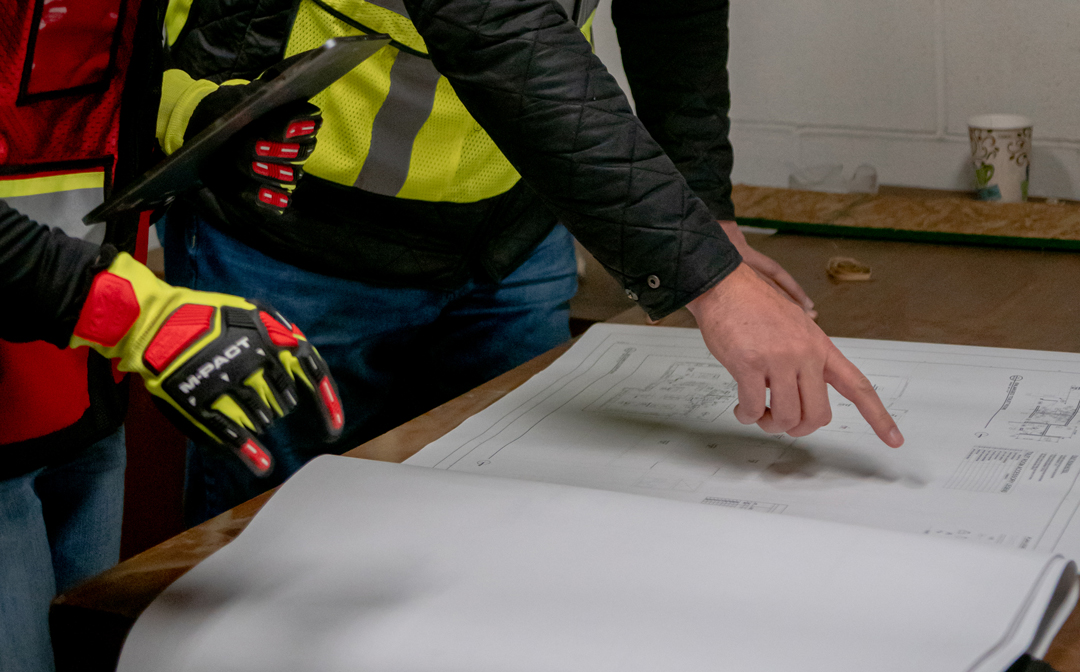In a recent interview with Zander Seaman, a veteran leak detection Project Manager, we asked him about his experience with collecting important information, especially as-builts, while working on project sites. Due to his many years of experience, he said, “I prove mapping wrong more often than I prove it right… Plans always show up on your last day of the project in the middle of the afternoon.”

Many facility managers are so used to waiting extended periods of time for their team to find inaccurate and old data that they think it is normal. It doesn’t have to be this way. We at SiteMap®, powered by GPRS, have made it our mission to shatter this standard. We want you and your project team to feel empowered, knowing that you can and should demand fully comprehensive as-builts from your contractor(s) prior to breaking ground.
What Is An As-Built?
As defined by BigRentz Inc., “‘as built’ drawings are used to track the many changes from the original building plans that take place during the construction of a building.” While projects progress and adjustments are made, these “drawings are necessary to record these changes and maintain an accurate representation of the building as it actually exists, especially for commercial construction projects.” Fully comprehensive as-builts should account for important features like building materials, dimensions, installations, private and public utilities, subsurface conditions and voids, and more.
Why are As-Builts Important?
Maintaining proper as-builts prior to construction is a crucial aspect to the initial planning phase. Here are three major reasons to consider for obtaining proper as-built drawings on day one of any project…
- Avoid Unnecessary Delays
Without a clear understanding of where you started, it can be extremely difficult to properly track progress or provide solutions to any challenges your project might face. By obtaining properly recorded as-built information day one, not only are you ensuring that the original state of your job site is properly documented prior to initiating any work, but you can also rest assured knowing that, when you need to reference this important information, the project will not be stalled significantly as you wait for these drawings to be created.
Working backwards is always far more time consuming than properly preparing at the start. Instead of running into major issues mid-project and having to set the overall timeline back months if not years until the mistake is rectified, maintaining proper documentation of your job site from the very beginning helps to ensure you can project any potential issues before breaking ground and refer back to this information to double check along the way.
- Maximize Job Site Safety
Understanding the underground infrastructure of your job site is absolutely essential in order to ensure your workers and the community surrounding your site are completely safe. Accidental line strikes, or gas main and water main breaks can be devastating if not fatal to an unsuspecting construction worker, and cause outages across entire municipalities. For this reason, as-builts must be obtained prior to digging such that all potential underground obstructions are properly accounted for. While you typically have to call 811 before excavating anywhere, this service does not provide line depths, nor do they locate private utilities. GPRS services ensure your site is fully evaluated top to bottom, accounting for any potential obstructions that could pose a hazard.
- Minimize Cost Overruns
By avoiding these first two issues described above, facility managers are also able to greatly minimize if not completely eliminate any chance of incurring the hefty price tags attached to unplanned delays and utility strikes. Costs of such magnitude not only throw a project off budget, but can also potentially shut it down or indefinitely postpone it due to lack of funding and resource support. For this reason, as-builts are a crucial tool to keeping any project on track and on budget.
How can SiteMap® Help?
Here at SiteMap®, powered by GPRS, we provide a wide range of site evaluation, mapping, and modeling services to ensure you and your team are working with the most accurate, up-to-date as-built information. Be it utility scanning, leak detection services, 3D laser scanning, or drone and aerial imaging, our GPRS experts will help you fully understand the current state of your job site above and below ground. Then, this data can be organized and fully visualized using SiteMap’s innovative platform.
Beginning with the Digital Plan Room; this organizational feature serves as a secure, central repository for all necessary facility maps, models, photos, reports, and as-built documentation of all varieties. Such files are then directly linked, cross-referenced, and viewable using the Map Viewer feature by appropriately tagging each document with its corresponding location information. While the Digital Plan Room provides a safe and secure digital storage space for all your project’s relevant facility documents, our Map Viewer feature simplifies the process of viewing multiple layers of facility data by allowing users to connect locational data with specific uploaded documents, models, and specifications.
With this innovative infrastructure management software, facility managers can then easily track and locationally designate documents so that they are readily available for future reference. These digital tools are essential for streamlining communication within collaborative construction projects.
Our services support projects across a wide range of industries Visualize The Built World™. Learn more about how SiteMap®, powered by GPRS, can support your next project by downloading our brochures, and contacting us for a quote today!
